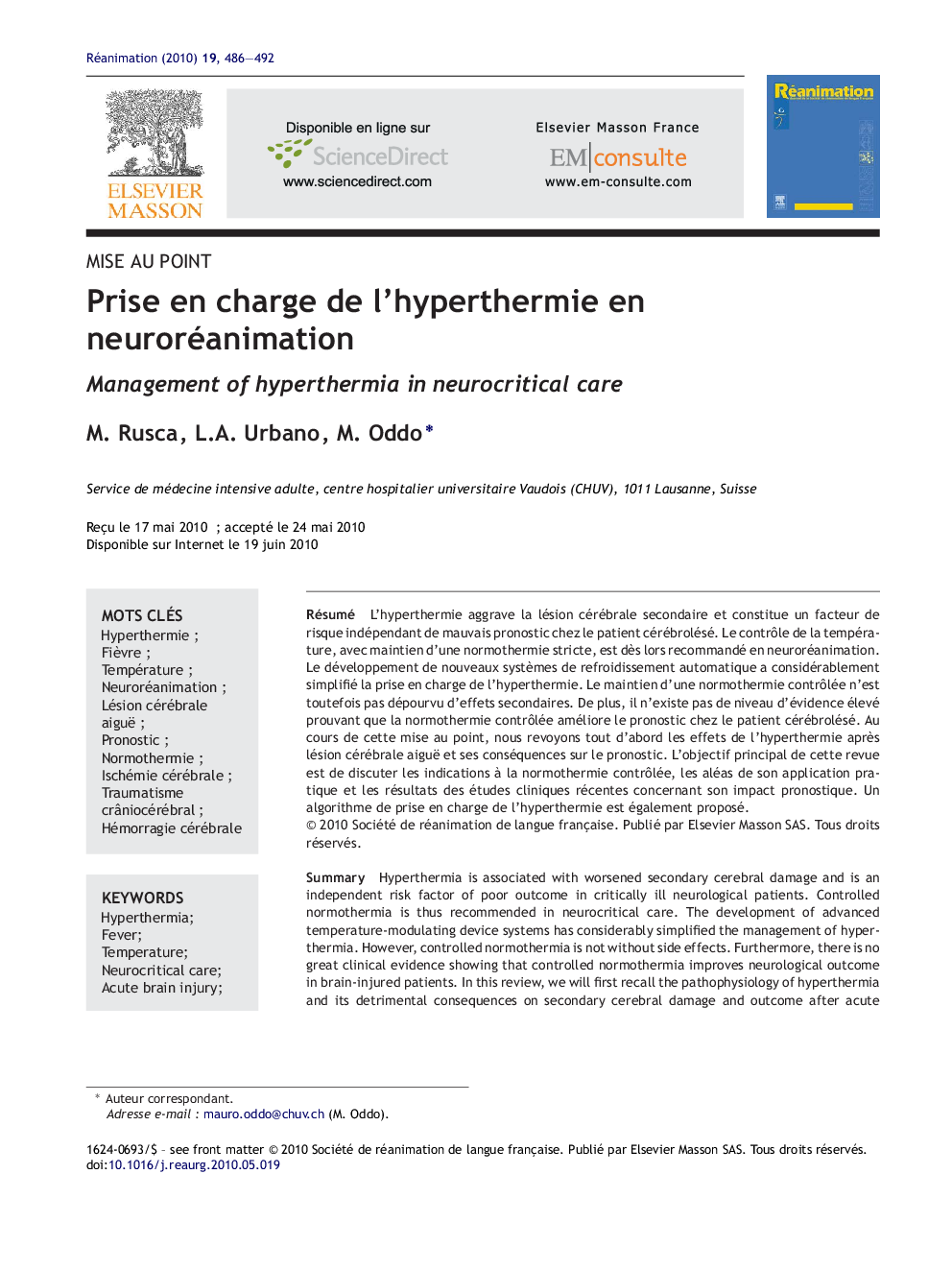| Article ID | Journal | Published Year | Pages | File Type |
|---|---|---|---|---|
| 2613153 | Réanimation | 2010 | 7 Pages |
Abstract
Hyperthermia is associated with worsened secondary cerebral damage and is an independent risk factor of poor outcome in critically ill neurological patients. Controlled normothermia is thus recommended in neurocritical care. The development of advanced temperature-modulating device systems has considerably simplified the management of hyperthermia. However, controlled normothermia is not without side effects. Furthermore, there is no great clinical evidence showing that controlled normothermia improves neurological outcome in brain-injured patients. In this review, we will first recall the pathophysiology of hyperthermia and its detrimental consequences on secondary cerebral damage and outcome after acute brain injury. We will then focus on principal indications and side effects of controlled normothermia and discuss recent clinical studies evaluating the impact of therapeutic temperature modulation on outcome.
Keywords
Related Topics
Health Sciences
Medicine and Dentistry
Emergency Medicine
Authors
M. Rusca, L.A. Urbano, M. Oddo,
